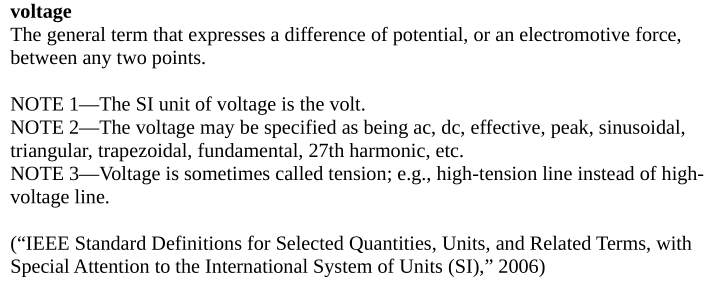
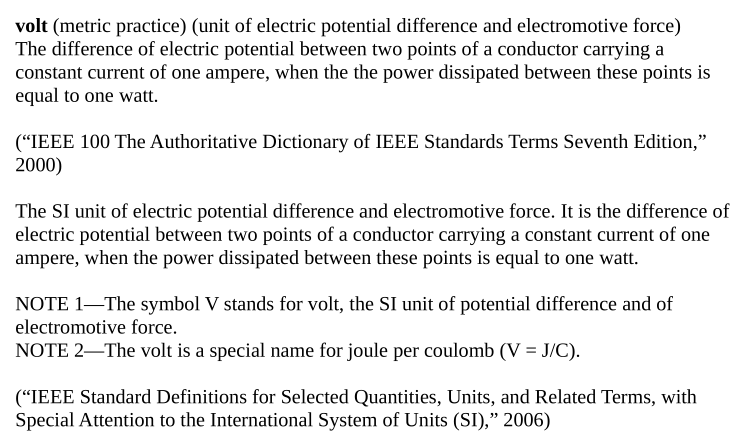


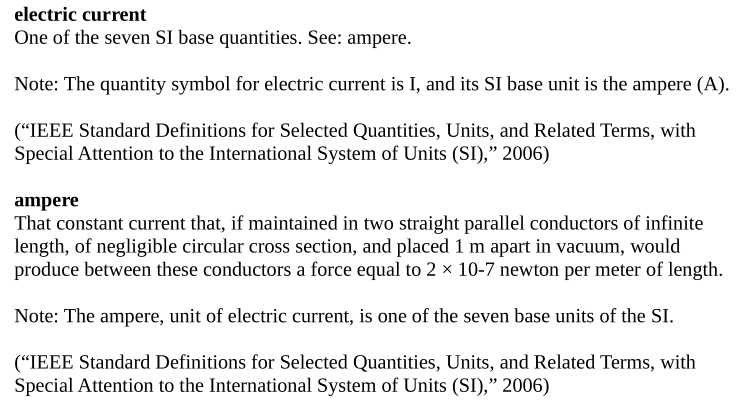

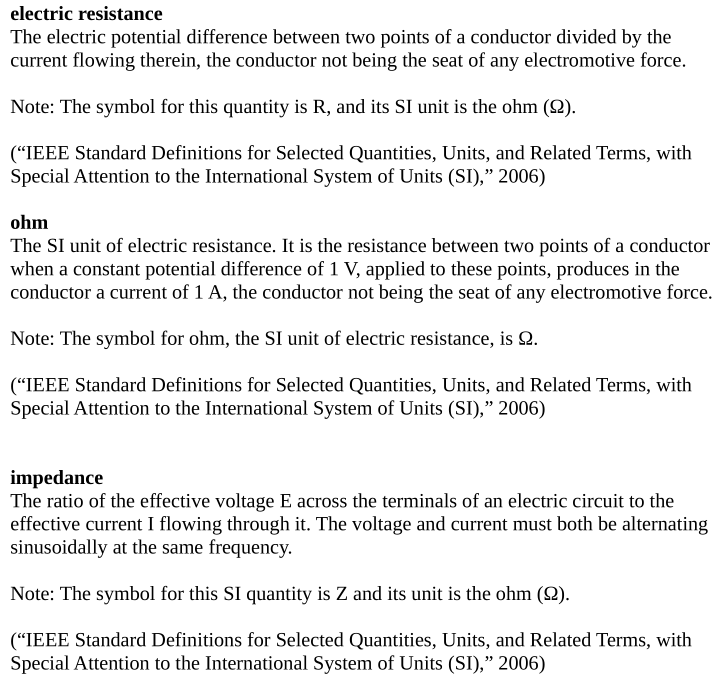
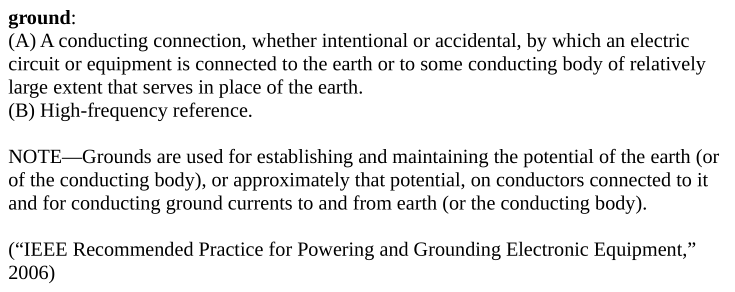
#fairUse for #educational purposes only
Di Scribd saya temukan pengguna yang mengunggah dokumen berikut ini, masih bisa dijadikan bahan belajar selama belum dihapus.
Ieee Dictionary Terms by naren20065035 on Scribd
#fairUse for #educational purposes only
Sumber lain yang dapat dijadikan sumber rujukan adalah:
Electropedia: The World’s Online Electrotechnical Vocabulary (IEC 60050 – International Electrotechnical Vocabulary)
Mengenai definsi arus (current) ada perkembangan menarik yang perlu diketahui. Sumber berita berasal dari NIST (National Institute of Standards and Technology).
It won’t be a minute too soon. The ampere (A) has long been a sort of metrological embarrassment. For one thing, its 70-year-old formal definition, phrased as a hypothetical, cannot be physically realized as written:
The ampere is that constant current which, if maintained in two straight parallel conductors of infinite length, of negligible circular cross-section, and placed 1 meter apart in vacuum, would produce between these conductors a force equal to 2 x 10–7 newton per meter of length.
For another, the amp’s status as a base unit is problematic. It is the only electrical unit among the seven SI base units. So you might logically expect that all other electrical units, including the volt and the ohm, will be derived from it. But that’s not the case. In fact, the only practical way to realize the ampere to a suitable accuracy now is by measuring the nominally “derived” volt and ohm using quantum electrical standards and then calculating the ampere from those values.**
In 2018, however, the ampere is slated to be re-defined in terms of a fundamental invariant of nature: the elementary electrical charge (e).*** Direct ampere metrology will thus become a matter of counting the transit of individual electrons over time.
One promising way to do so is with a nanoscale technique called single-electron transport (SET) pumping. Specially adapted at NIST for this application, it involves applying a gate voltage that prompts one electron from a source to tunnel across a high-resistance junction barrier and onto an “island” made from a microscopic quantum dot.
Demikianlah contoh perkembangan bertahap dalam sains dan teknologi. Yang masih bisa dipastikan adalah bahwa upaya memajukannya tidak pernah berhenti.